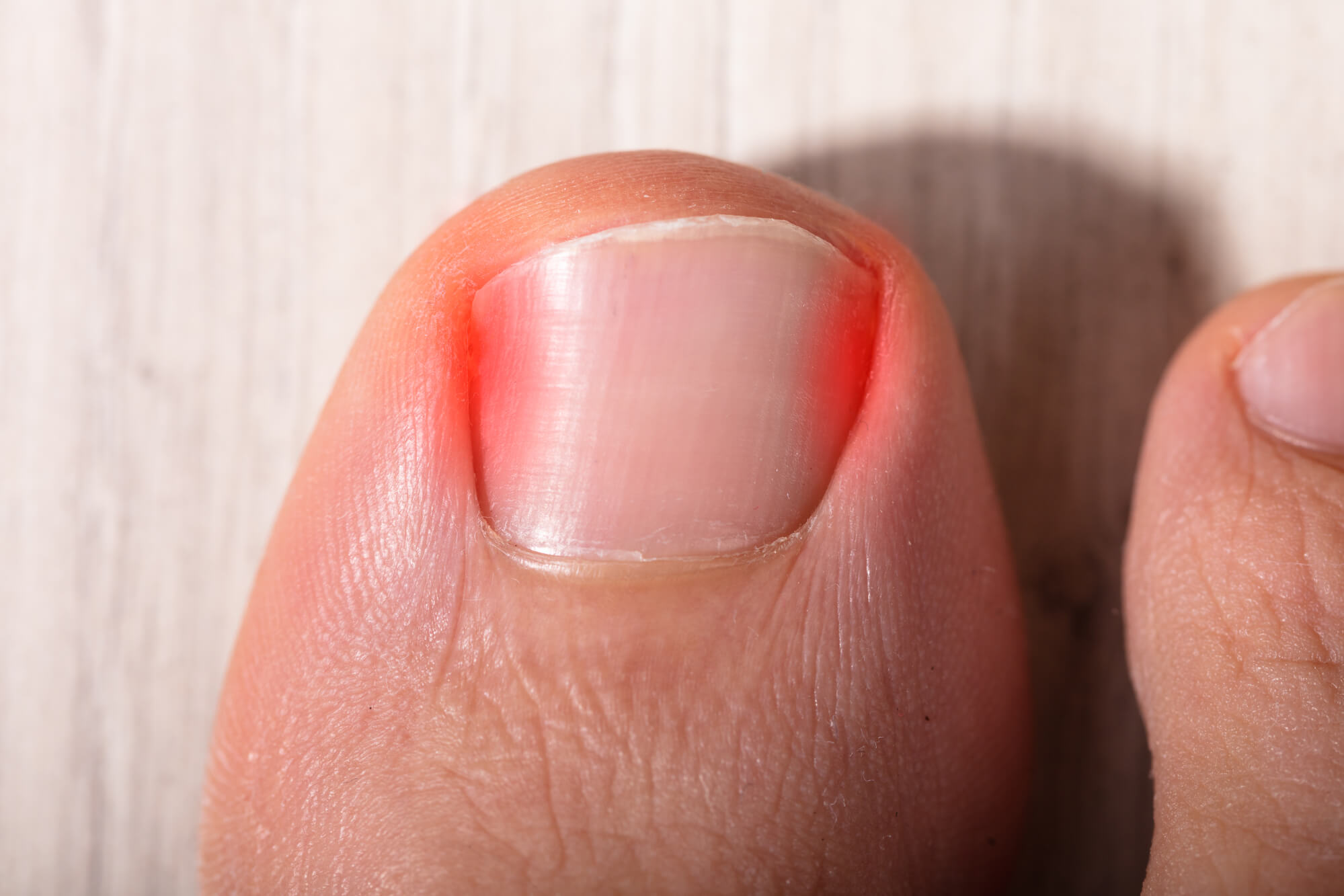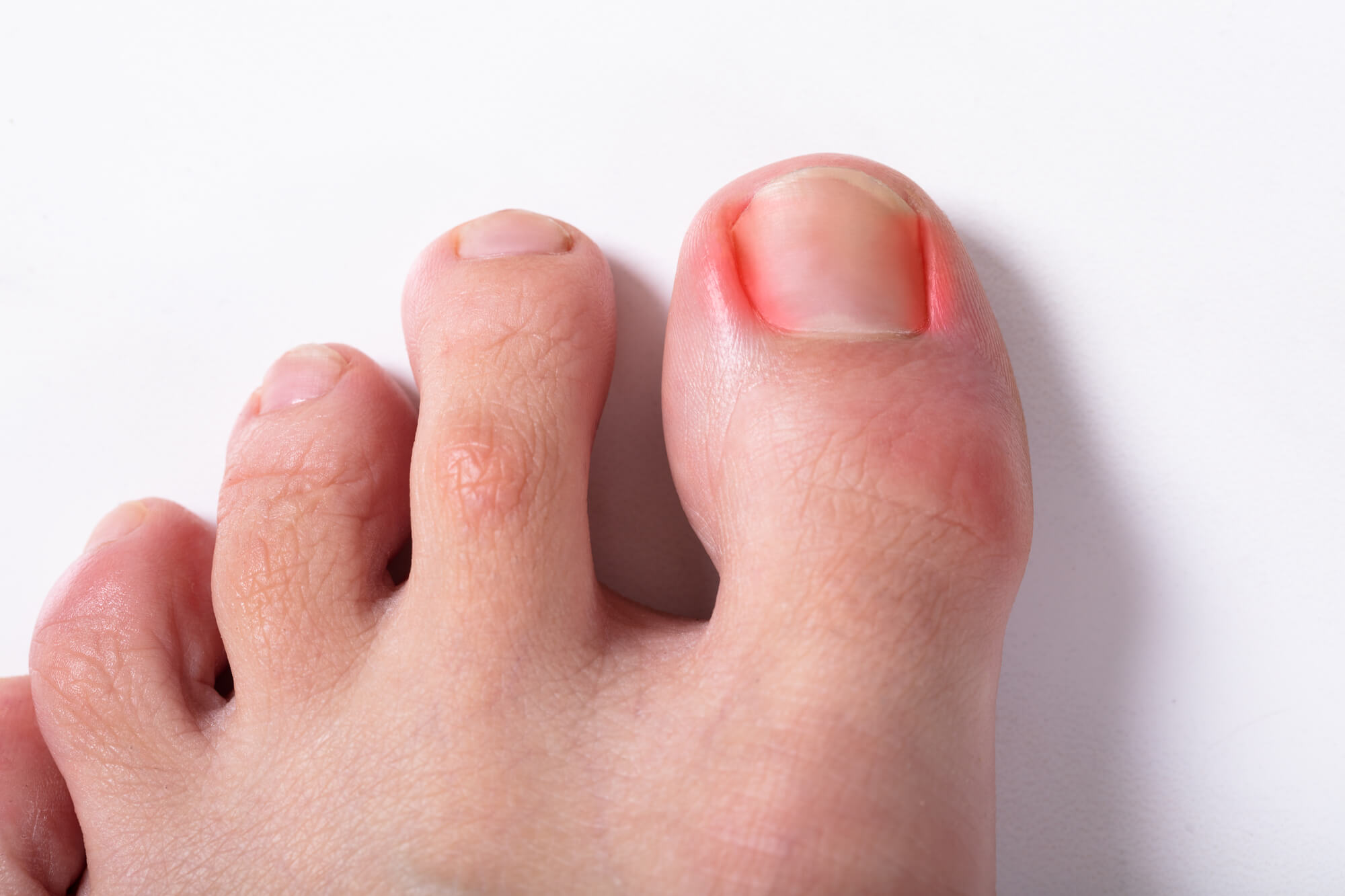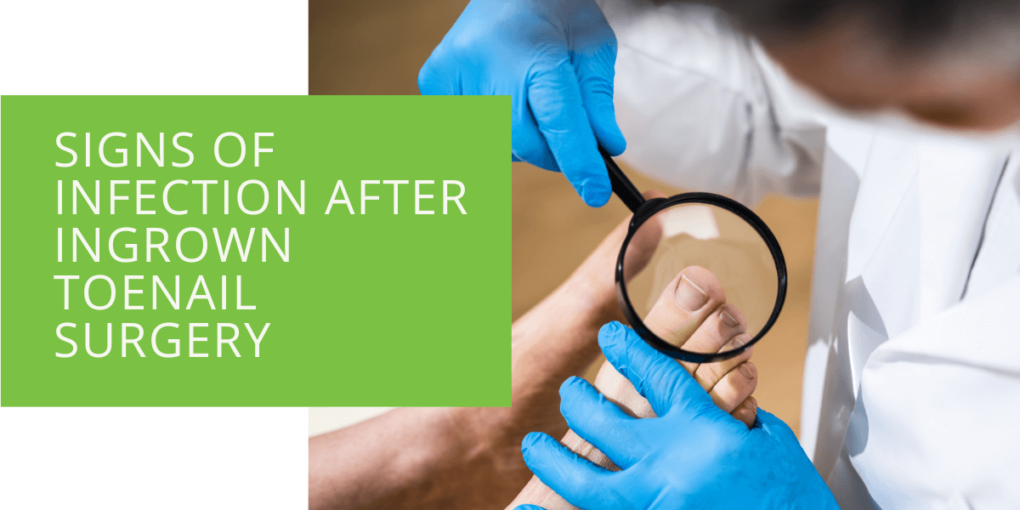Signs of Infection After Ingrown Toenail Surgery
Ingrown toenails can be a painful and uncomfortable foot problem, and many people have to undergo surgical intervention to alleviate the pain and prevent complications. If you recently had ingrown toenail surgery or toenail removal, you might be curious about your post-operative care needs and the signs of infection to watch out for. This comprehensive guide aims to provide all the necessary information and guidance to help you recover smoothly.
After surgery, your toes need proper care and attention to heal correctly. While it's a highly effective procedure, it's still essential to be vigilant and monitor your recovery progress closely. This guide covers everything you need about post-operative care, including managing pain, dressing your wound, and cleaning your toe. We'll also review the common signs of infection you should look out for, such as redness, swelling, and discharge. By following this guide, you can take care of your toes properly, minimize your risk of complications, and get back on your feet in no time.
Key Takeaways
- Effective post-operative care, including dressing changes, wound care, and cleanliness, prevents infection after ingrown toenail surgery.
- It's essential to monitor for early warning signs of infection, such as redness, unusual discharge, persistent pain, fever, or systemic symptoms, and seek prompt medical attention if any occur.
- Choosing an experienced podiatrist and a clinic prioritizing infection prevention is essential for a successful and safe ingrown toenail surgery and recovery.
Understanding Ingrown Toenail Surgery
What is Ingrown Toenail Surgery?
Ingrown toenail surgery, or ingrown toenail removal, is a procedure a podiatrist performs to address the discomfort and complications associated with ingrown toenails. It typically involves the removal of a portion of the affected toenail or, in severe cases, the entire nail.
Ingrown toenails occur when the edge of the toenail grows into the surrounding skin, leading to pain, swelling, and potential infection. Surgical intervention becomes necessary when conservative measures, such as warm water soaks and proper nail trimming, fail to provide relief.
The Importance of Toenail Removal
Ingrown toenails can lead to excruciating pain, swelling, and even infection if left untreated. Toenail removal is often recommended when conservative measures fail to provide relief. It aims to eliminate the source of the problem by preventing the ingrown toenails from growing back.
Toenail removal is a definitive solution for recurring ingrown toenails. During the procedure, your podiatrist will carefully remove the problematic part of the toenail or, in some cases, the entire nail. This prevents the ingrown nail from causing further discomfort and allows the affected area to heal properly.
Risk of Infection in Nail Surgery
While ingrown toenail surgery is generally safe and effective, like any surgical procedure, there is a potential risk of infection. The nail bed and surrounding soft tissue are particularly vulnerable during recovery.
Surgical procedures, including ingrown toenail surgery, introduce a potential entry point for bacteria into the body. The surgical area, especially the exposed nail bed, requires careful handling and post-operative care to minimize the risk of infection.
Post-Op Care: Crucial Aftercare Measures
Importance of Proper Aftercare
Effective post-operative care prevents complications, including infection, after ingrown toenail surgery. Following your podiatrist's instructions diligently is of utmost importance.
Proper aftercare is essential for a successful recovery. It includes following your podiatrist's recommendations regarding wound care, keeping the surgical area clean, and adhering to prescribed medications and dressing changes.
Dressing Changes and Wound Care
Your podiatrist will likely apply a bandage or dressing to the surgical site. Following their recommendations regarding when and how to change these dressings is crucial. Keeping the wound clean and covered helps minimize the risk of infection.
Dressing changes are essential to maintain a sterile environment around the surgical site. Your podiatrist will provide specific instructions on when to change dressings, how to clean the wound, and what products to use. Adhering to these guidelines is vital to prevent infection.
Keeping the Surgical Area Clean and Dry
Maintaining cleanliness is vital in preventing infection. Avoid exposing the surgical area to excessive moisture, and be gentle when cleaning. Warm water and mild soap can be used, but be cautious not to scrub too vigorously.
The surgical area should be kept dry to prevent bacterial growth. Gentle cleaning with warm water and mild soap, followed by thorough drying, helps maintain hygiene and reduces the risk of infection.

Common Aftereffects of Ingrown Toenail Surgery
Pain and Discomfort: What's Normal?
It's common to experience some pain and discomfort after ingrown toenail surgery. However, the intensity and duration of pain can vary. Your podiatrist may prescribe pain relief medications or recommend over-the-counter options.
Pain and discomfort are typical post-operative symptoms. The pain level can vary based on individual tolerance and the extent of the surgery. Your podiatrist will guide pain management, including pain medications or home remedies like elevation and ice packs.
Swelling and Bruising: Expected Symptoms
Swelling and bruising are typical reactions to surgery. These symptoms usually subside over time. Elevating your foot and applying ice packs as directed can help reduce swelling.
Swelling and bruising are common responses to surgery-related trauma. These symptoms are temporary and gradually improve as the healing process continues. Elevation and ice packs can help alleviate swelling and discomfort.
Managing Discharge and Drainage
A certain amount of discharge is normal during the early stages of recovery. However, it's crucial to differentiate between normal discharge and signs of infection. Contact your podiatrist promptly if you notice increased pus or an unusual odor.
Discharge is a part of the body's natural healing process, as it helps remove dead cells and debris. However, if the discharge becomes excessive, color changes, or develops a foul odor, it could indicate an infection in the surgical area.
Early Warning Signs of Infection
Why Infections Are a Concern
Infections in the nail bed or soft tissue can be serious and may require immediate medical attention. Understanding the early warning signs is essential for a timely response.
Infections can lead to more significant complications if left untreated. They can spread to adjacent tissues, causing cellulitis or even deeper soft tissue infections. Timely identification and intervention are crucial to prevent such outcomes.
Monitoring for Redness and Inflammation
Redness and inflammation around the surgical site are common initially. However, if these symptoms worsen, spread, or become accompanied by severe pain, it may indicate an infection.
While some initial redness and inflammation are expected, worsening or spreading these symptoms can indicate an underlying infection. It's essential to monitor the area carefully for any unusual changes.
Assessing Persistent Pain
While some discomfort is expected during recovery, persistent or increasing pain beyond the initial stages could indicate infection or other complications. Don't hesitate to reach out to your podiatrist.
Pain that persists or intensifies beyond the expected post-operative discomfort should be evaluated promptly. It may signal an issue that requires medical attention, such as an infection affecting the surgical site.

Identifying Abnormal Discharge
Differentiating Normal Drainage from Infection
Normal drainage is usually clear or slightly yellowish. If you notice a significant increase in drainage, a change in color to green or yellow, or a foul odor, these are potential signs of infection.
Distinguishing between normal and abnormal discharge is crucial. Normal drainage helps keep the wound clean, while abnormal discharge, characterized by color changes and unpleasant odor, may indicate infection.
Recognizing Pus or Unusual Smells
Pus is a concerning sign and may indicate the presence of bacteria. If you observe pus around the surgical site or notice a foul smell, it's essential to consult your podiatrist promptly.
Pus is a visible sign of infection, and its presence should not be ignored. Additionally, an unusual odor emanating from the surgical area indicates that something may be amiss and requires attention.
Fever and Systemic Symptoms
Understanding the Connection Between Fever and Infection
A fever is your body's way of responding to infection. If you develop a fever after ingrown toenail surgery, it could indicate a systemic infection.
A fever indicates that your body is actively fighting off an infection. In post-surgical recovery, a fever should be taken seriously and promptly reported to your healthcare provider.
Recognizing Systemic Signs of Infection
Other systemic signs may include chills, nausea, and overall weakness. These symptoms should not be ignored, and immediate medical attention is recommended.
Systemic symptoms indicate that an infection may have spread beyond the surgical site. They can indicate a more severe infection, and seeking prompt medical care is crucial to prevent further complications.
Recovery Timeline and Follow-Up
Typical Recovery Period After Ingrown Toenail Surgery
The recovery timeline varies from person to person, but most individuals can expect gradual improvement over several weeks. Your podiatrist will guide you when you can resume regular activities.
The recovery duration can vary depending on factors such as the extent of the surgery and individual healing abilities. Your podiatrist will offer personalized guidance on your expected recovery timeline.
Scheduling and Keeping Follow-Up Appointments
Regular follow-up appointments with your podiatrist are essential to monitor your progress and address any concerns promptly. Be sure to adhere to your scheduled visits.
Follow-up appointments are crucial for assessing the healing process and addressing any issues that may arise during recovery. Consistently attending these appointments ensures that your recovery stays on track.
Adjusting Expectations Throughout Recovery
It's essential to understand that toenails may take time to regrow and appear different than before. Phenol treatments, often used in ingrown toenail surgery, can alter the nail's appearance.
The appearance and regrowth of the toenail may vary, and this can be attributed to the specific surgical techniques used, such as phenol application. Your podiatrist will provide information and reassurance regarding the expected changes in your toenail's appearance.
Conclusion
Understanding the signs of infection after ingrown toenail surgery is crucial for a smooth and safe recovery. By following proper aftercare measures, recognizing warning signs, and choosing a trusted podiatrist and clinic, you can minimize the risk of infection and ensure the best possible outcome for your foot health.
Remember that your proactive approach to post-operative care is significant in your recovery journey. If you have concerns or experience symptoms that raise suspicion of infection, don't hesitate to contact your healthcare provider promptly. Your well-being is our utmost priority, and we're here to support you every step of the way.
Take action today, schedule an appointment with our expert podiatrists at ePodiatrists, and embark on a pain-free and healthy future for your feet. Your comfort and safety are our commitment, and we look forward to assisting you in achieving optimal foot health.

